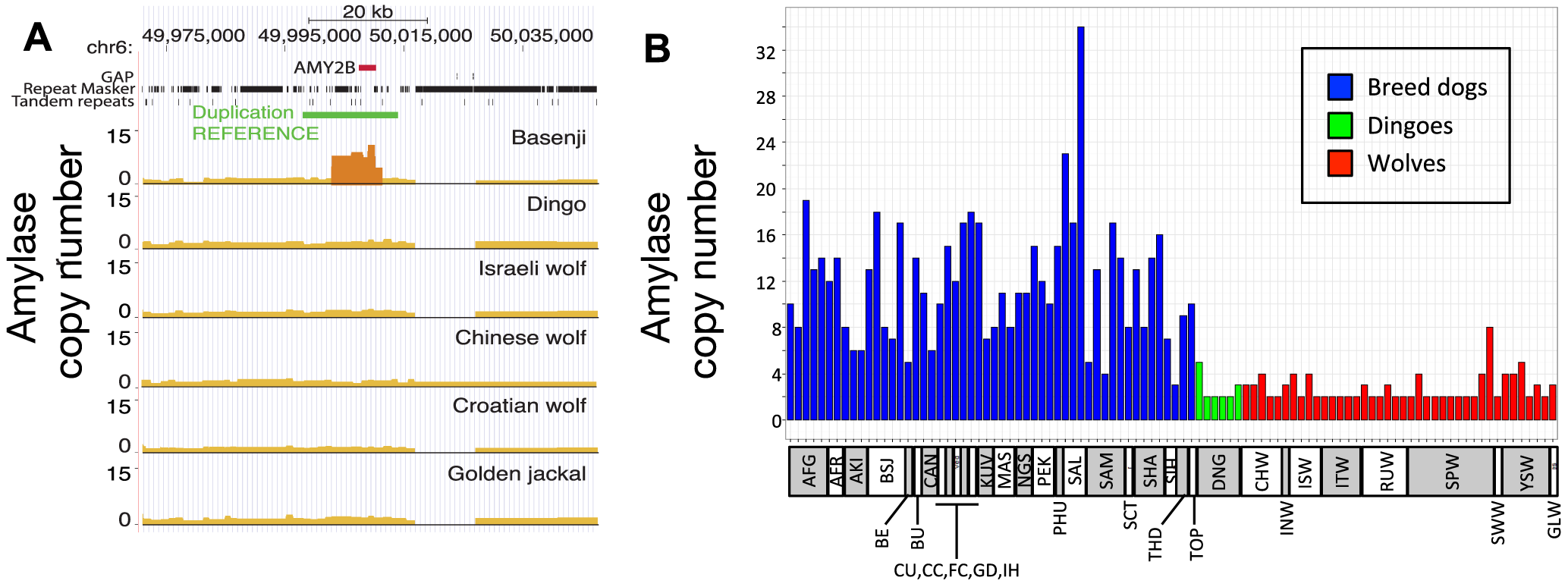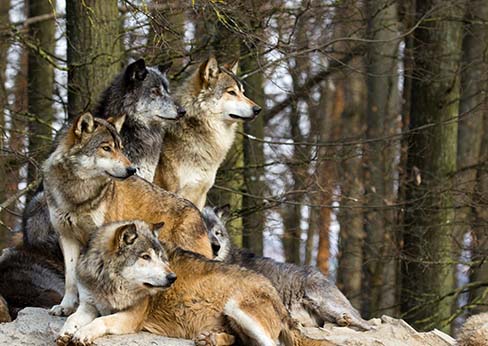In this post:
- Did the domestic dog evolve from wolves?
- What is dominance? And why do animals display it as a behavior?
- What does dominant behavior look like in a wolf?
- What is the difference between dog and wolf dominance?
The use of dominance and pack theory in explaining dog behavior has recently come under a great deal of scrutiny. In fact, The Association of Professional Dog Trainers released a statement saying that relying on dominance theory can have negative ramifications for all aspects of pet ownership, from how dogs are perceived in society to our personal relationships with our canine companions.
So, where does this theory of dominant behavior is dogs come from? Most people attribute it to the fact that dogs have descended from wolves.
Did the domestic dog evolve from wolves?
Dogs are closely related to wolves, and we can learn a lot about dogs by looking at wolves and studying wolf behavior. But it’s imperative that we don’t over-interpret the connection. While dogs and wolves may have started in the same place, they have since evolved to become two very different species.
Most domestic dogs are more closely related to an ancient breed of wolves than today’s modern wolves. “It’s these ancient wolf populations, now extinct, probably residing in Europe, that are the direct ancestors of domestic dogs,” says Robert Wayne, a biologist at the University of California, Los Angeles.

According to research recently done by Robert Wayne, DNA indicated that dogs descended from an unknown wolf-like ancestor. This means that dogs and wolves have a common ancestor, not that dogs evolved directly from wolves.
There are also many physical differences between dogs and wolves. Their bodies are built differently. Wolves are much larger and made for hunting. And while your dog may chase a squirrel up a tree now and then, they are not what you would call hunters. When it comes to diet, domestic dogs are omnivores, while wolves are primary carnivores.
Because of all the differences, dominance theories that apply to wolves don’t apply to dogs.
What does dominant behavior look like in a wolf?
Dominance in wolves and canines has been studied for so long, even Charles Darwin (1877) wrote about it, “Dominant wolves assume the classic canid standing posture with tail up at least horizontally, and subordinate or submissive individuals lower themselves and “cringe”.
In “standing over,” one wolf would stand over (Schenkel 1947), another wolf who was lying down. The first dog would position its groin above the nose of the lying wolf. Sometimes the lying wolf sniffed at the groin or genitals of the standing wolf. Schenkel (1947) saw “standing over” only during “peaceful” times and did not seem to consider it dominance-related.
While this act of one wolf “standing over” another occurs repeatedly and is often attributed to asserting dominance, there is currently no clear explanation for this behavior.
What is dominance? And why do animals display it as a behavior?
David Mech found that “Dominance displays are uncommon except during competition for food. Then they allow parents to monopolize food and allocate it to their youngest offspring.”
In actuality, dominance is a form of aggression.
This means when an animal is acting dominantly towards another, they display many of the typical signs; ears forward, stiff body, hackles up, and a direct gaze. Sometimes there is growling and snapping, and if things continue to escalate, it can result in physical conflict between the two animals.
The critical thing to understand about dominance is that it happens when there are limited resources.
What is the difference between dog and wolf dominance?
Up until recently, the wolf pack structure and dominance patterns have been incorrectly applied to dogs. The social structure in dogs and wolves is very different. Wolf packs have one alpha, a leader, and the rest of the pack follows a very linear dominance order. This ensures successful hunts and that the strongest remain strong to protect the rest of the pack.
Dogs, on the other hand, don’t have that structure. One member may act dominantly to get to their food bowl first but will defer to another about where to walk or sleep.
Every situation can have a different “alpha.” Dogs gravitate to other friendly dogs and are usually not looking for a strong leader to protect them.
Thankfully, most educated trainers today are aware that canine-human interactions are not driven by social rank and that there is no need for dominant behavior. As we outlined above, one dog may be more assertive in a specific encounter, and more deferent in the next. It all depends on what’s at stake, and how strongly each dog feels about the outcome. There are many subtleties about how hierarchies like these work, and how the members of a social group communicate – in any species.
Special Thanks To …

Dr. James C. Ha, Ph.D., CAAB
Dr. James C. Ha, Ph.D., CAAB is a professor of applied animal behavior at the University of WA and a certified applied animal behaviorist with over 30 years of experience in animal behavior teaching, research, consulting, and expert witness services. Aly was privileged enough to be in his Applied Animal Behavior Certification program.

Discovery Wildlife Park
Discovery Wildlife Park is a refuge for orphaned and unwanted wildlife. They provide “forever” homes for animals who are not able to be returned to the wild. It is located on a 90-acre park with over 30 species of orphaned animals. They offer many family fun adventures from visiting the animals in their zoo to camping.

Fort Rickey Children’s Discovery Zoo
The Fort Rickey Discovery Zoo is a special kind of petting zoo with a focus on children and healthy family fun. Everything they do centers on the understanding that, for kids, passive observation of zoo animals is not enough. Children need to be engaged. They need to use all their senses to explore, manipulate, and discover. They strive to provide the highest quality care for our animals while providing the best in healthy, outdoor family entertainment and education.





